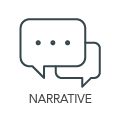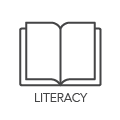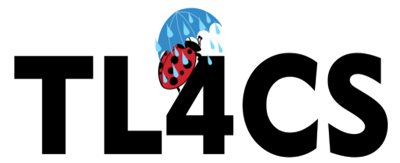Standards + Practices
Science Standards:
LS.5.2.1 Engage in argument from evidence to compare the characteristics of several common ecosystems in terms of their ability to support a variety of populations.
LS.5.2.2 Use models to classify the organisms within an ecosystem according to the function they serve: producers, consumers, or decomposers (biotic factors).
LS.5.2.3 Use models to infer the effects that may result from the interconnected relationship of plants and animals to their ecosystem.
Resources + Supports

Participation Makes an Impact!
Celebrate and share what you’ve learned! You’ve completed a year of scientific research and have supported researchers working on the Lost Ladybug project as they attempt to better understand how and why populations of native ladybugs have declined in North America. Along the way, you have learned so much about data collection, asking questions, repeated searches, and more. You are stewards of the ladybugs in your schoolyards and your participation has made an impact!
Now that students have been collecting data throughout the year and sharing data with others, the class can answer the overarching questions about species variance and geographic variance. Because these questions highlight a lot of what students learned as they participated in Lost Ladybug throughout the year, students will refer to these answers to the two overarching questions and the evidence used to answer them as they develop presentations.

Mr. Jones’ Class Celebrates Their Contributions to LLP
As his class wraps up their year of participation in the Lost Ladybug Project, Mr. Jones wants to make sure that his students recognize the importance of their contributions to the project. To help his students take stock of what they have learned this year, Mr. Jones facilitates a conversation around how students’ predictions have changed over time, asking students to describe what led to these changes. During the class discussion, Mr. Jones encourages students to look back at their work this year, including explanations constructed in January, and graphs and graphic organizers created in March. As a class, they discuss additions to these products based on the most recent data they have collected in order to reach consensus on answers to the overarching questions. Next, they decide to share what they have learned this year with a class of 4th grade students. His students are excited about the opportunity to pass the baton to next year’s group of 5th graders. Mr. Jones highlights that what they are doing is similar to how professional scientists work, emphasizing that science builds on the knowledge of others to develop better understanding over time.
Mr. Jones also hopes this experience may encourage students’ future participation in this or other citizen science projects. He asks the students to reflect on how they felt the first time they had a search where they found no ladybugs. Students reply that they were “disappointed” or “discouraged.” Mr. Jones asks how they felt more recently when they went out searching on a warm afternoon, a day when they expected to find many but found no ladybugs. One student says, “I was curious to know why they weren’t there.” Mr. Jones adds, “Scientists are curious about this too, which is why it has been really important that we share with them what we do or do not find. They combine our data with data from many others to study it and share what they are learning about a wide range of ladybug species and their habitats. With these data available, they will have more data than they could have ever collected on their own.”
A student asks if Mr. Jones’ class will participate the following year, and he indicates, “That’s the plan because imagine how interesting it will be to see how what we observe changes from year to year and think about what might be causing those changes.” Another student chimes in, “I want to come back and help!” Mr. Jones informs students that there are many ways they can help, either continuing efforts on their own outside of school, or thinking about how to share what they have learned with other students or community members. Some students express interest in attracting more ladybugs to the school grounds for next year’s class. Mr. Jones talks with the whole class about how they would do that and then suggests they work on a class presentation for the principal that shares their ideas. He asks for a small group to volunteer to lead the effort and sets aside a few days of science instruction after state testing for them to work on the presentation. Other small groups focus on other areas of interest for their final projects.

Presentation Ideas
Throughout the year, students have been gathering and making sense of data about ladybugs. During this activity, they will have the opportunity to apply what they have learned to present on a topic of their choosing or one assigned by you. These ideas could connect to standards covered throughout the year and to the authentic audience your class will be presenting to. Ideas for students to present on:
- habitats that attract ladybugs
- characteristics of ecosystems where ladybugs are easily found
- ladybugs as consumers
- the relationship between the ladybugs and plants they prefer
- the relationship between the abundance or lack of aphids, or other insects, for ladybugs to eat
- the relationship between the abundance of ladybugs and weather
- the use of pesticides on an ecosystem and their effect on the abundance of ladybugs
- the prevalence of native and non-native species of ladybugs in different ecosystems
- the prevalence of native and non-native species of ladybugs in different seasons.

Mathematics Connections
Some of the math skills and content that students have acquired throughout the year while using historical ladybug data will help support their investigation. Students may rely on their understanding of any combination of the following:
- Recognizing when questions asked yield categorical or numerical data
- Identifying relevant and irrelevant data in the context of an investigation question
- Checking answers to questions for reasonableness
- Recognizing the total number of ladybugs observed as a separate, but related data point to the variation of ladybug species
- Using place value concepts to order, compare, add, and subtract whole numbers
- Recognizing the variability of data collected between different school sites
- Creating, reading, and interpreting bar graphs
- Considering, explaining, and evaluating the relationship(s) between two or more variables
- Using data as evidence for explanations
- Considering alternative explanations for patterns in data (Is your explanation the only explanation?)
Various tools can help support students as they investigate and consider meaningful ways to present their thinking. The following list provides suggestions for tools that could aid students throughout their investigations:
- Graph paper, pencil, ruler (to assist with accuracy and creating intervals)
- Google Sheets
- Excel Spreadsheets
- Other representations that students are comfortable with (e.g., PowerPoint, Google Maps)

Presenting Findings
Assist students in generating ideas for how to present the information they have chosen to share. Encourage students to draw on what they have learned over the course of the year to help them make sense of the data and design a presentation. The following list provides ideas for how students might present their findings and to whom they might present.
Ideas for Presentations:
- School Specific Field Guide
- Infographic
- News report
- Written report
- Poster Presentation with key points
- Podcast or other audio recording
- PowerPoint or Slides presentation
Ideas for an authentic audience:
- Groundskeepers
- Master gardeners or school garden committee
- A younger grade
- Parents
- School administrators
- Local officials
- Park representatives
- Local college Entomology club or Entomology/Science majors
- Students from another school
- Local chapters of conservation organizations such as the Nature Conservancy
- Local chapters of social-philanthropic groups such as Kiwanis

Supporting Student Data Collection
Your class in the following school year will potentially have data to work with right at the start of the new school year, if you have your students collect data over the summer. Furthermore, the end of the school year might be a great time to have your current students introduce the project to the rising 5th graders as a way to build excitement and enthusiasm for continuing the project in the following year.
If you want to have students continue collecting data for the project over the summer, you may need to provide support on how students can do this on their own. Refer to the at-home data collection portion of the August/September Outdoor Protocols Support for considerations regarding student data collecting efforts over the summer.

Sample Rubric
Students’ topics, presentation styles, and audiences will vary, but it will be important to determine what their presentations demonstrate about their understanding and reflection of their contributions to this citizen science project. A sample rubric is provided below.
| 1 (Fair) | 2 (Good) | 3 (Strong) | |
| Reflection Topic | I can identify different ideas I have learned about through the LLP this year. | I can explain one topic in detail that I have learned about through the LLP project. | I can choose a topic I have learned about through the LLP project that requires me to use data as evidence to explain the topic. |
| Data as Evidence | I have included data in my presentation. | The data included in my presentation provide evidence for some of my ideas. | The data included in my presentation were chosen to provide evidence for different aspects of the topic I chose to explain. |
|
Data Collection Reflection Example: our class only spent 10 minutes searching during many of our hunts, this may have reduced the number of ladybugs we could find as compared to our partner school that regularly participated in 30 minute hunts. |
I have included information about how some of the ladybug searches were conducted. | I have explained how the way ladybug searches were conducted could impact collection data. | I have explained how confident I am in my ideas based on the way ladybug searches were conducted and included instances when ladybugs were not found in a way that explains the importance of zeroes. |



